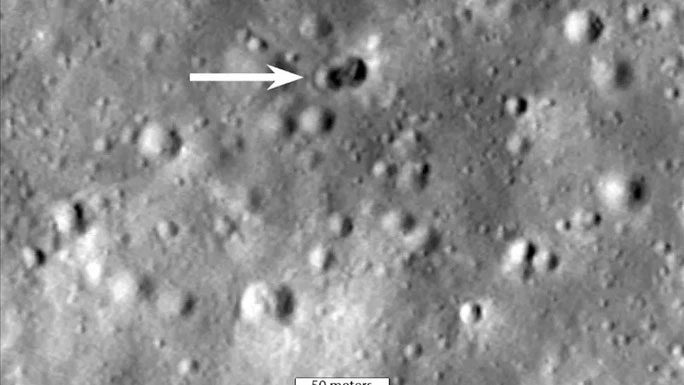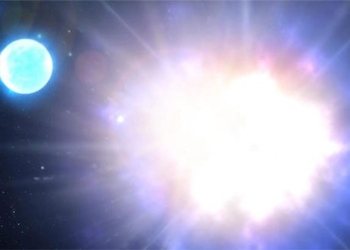A new study has raised the number of “suspects” responsible for the appearance of a strange double impact crater on the Moon last year to two. Both are rockets used to launch spacecraft.
According to Space.com, a new double impact crater named WE0913A, measuring up to 29 meters in diameter, has appeared mysteriously on the Moon since March 4, 2022, but scientists believe it is not due to an asteroid.
The area where the double crater has appeared is close to the famous Hertzsprung impact crater, which was captured by NASA’s Lunar Reconnaissance Orbiter.

The Moon is one of the latest “victims” of debris from human space activities – (Photo: NASA).
There are two main “suspects” identified by scientists worldwide, both linked to human activity.
The first hypothesis suggests that the upper stage of the SpaceX Falcon 9 rocket from the United States, used to launch the DSCOVR satellite to observe Earth in February last year, “went astray” and crashed into Earth’s natural satellite, leaving a strange “hole” on its surface.
However, a new study from the University of Arizona has proposed a new potential culprit: the upper stage of the Long March 3C rocket from China.
Similar to the American rocket, the Long March 3C rocket was also used to launch spacecraft.
It was responsible for launching Chang’e 5-T1, a robotic spacecraft that China sent to the Moon in October 2014. Previously, China believed that the upper stage of this Long March 3C rocket had burned up in the atmosphere after a successful launch.
According to the research team from the University of Arizona, they reached this conclusion based on calculations to find an object heavy enough to create the WE0913A crater. The upper stage with two engines of the Chinese rocket weighs over one ton.
While there is still debate, most scientists around the world agree that this “double hole” is caused by a piece of human-made space debris.
This incident adds to the warning that human space activities have left numerous hazardous objects in Earth’s orbit, including satellites, small spacecraft, and discarded rocket parts.
These objects can sometimes collide and shatter, creating a dense layer of debris that poses a threat to operational space stations and spacecraft.
Just a few days ago, a piece of space debris caused the Russian Progress spacecraft, which was docking with the International Space Station (ISS), to fire its engines, effectively moving the entire station “out of position.”





















































